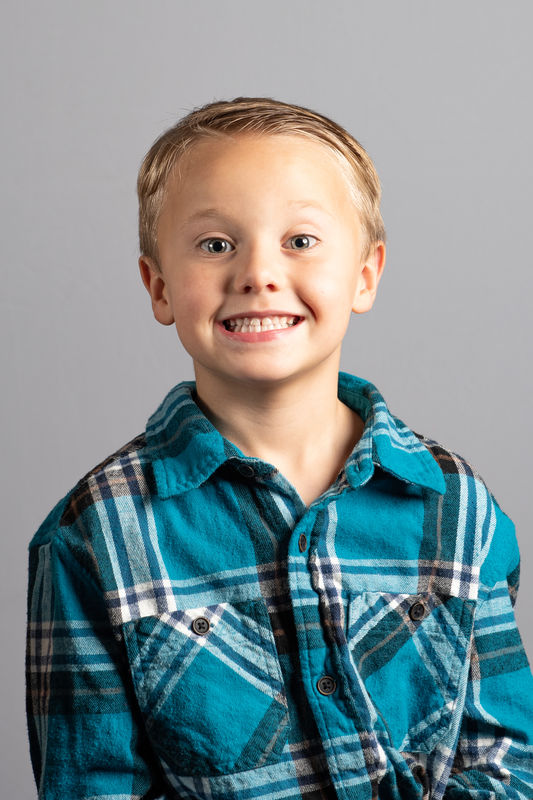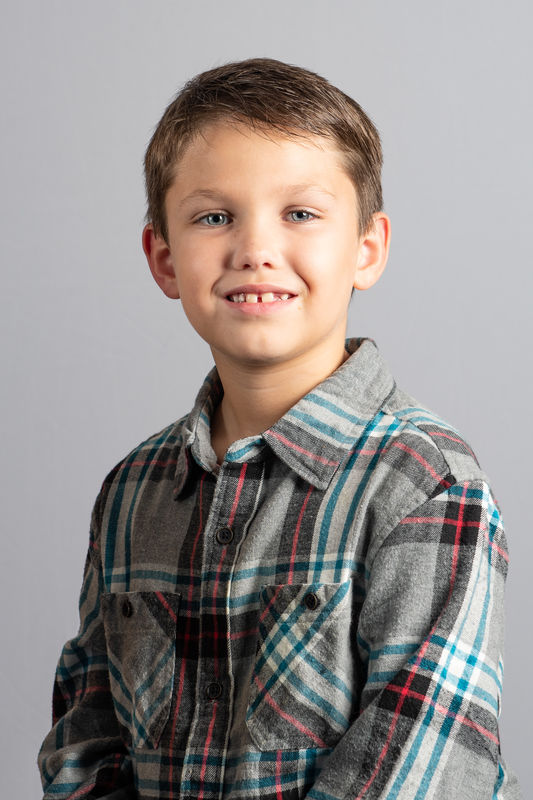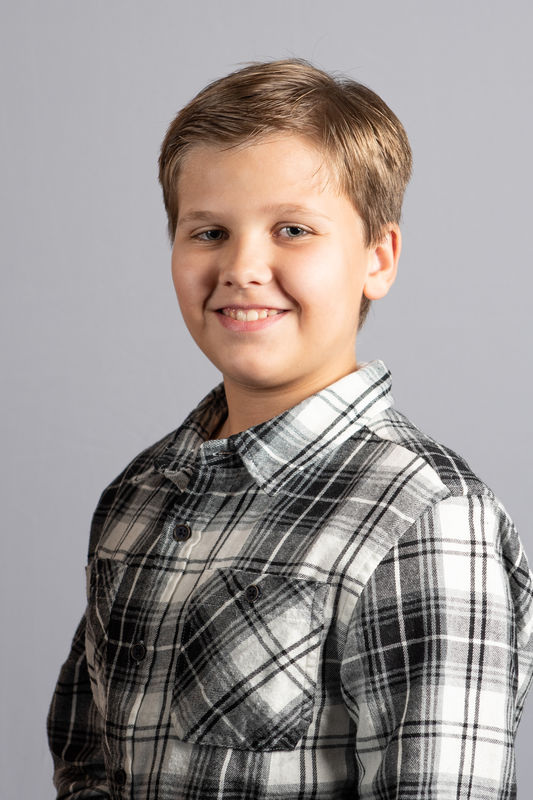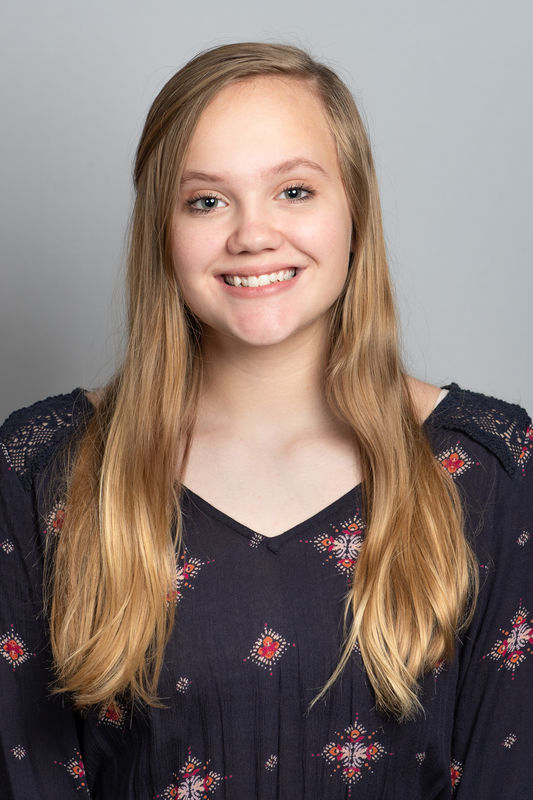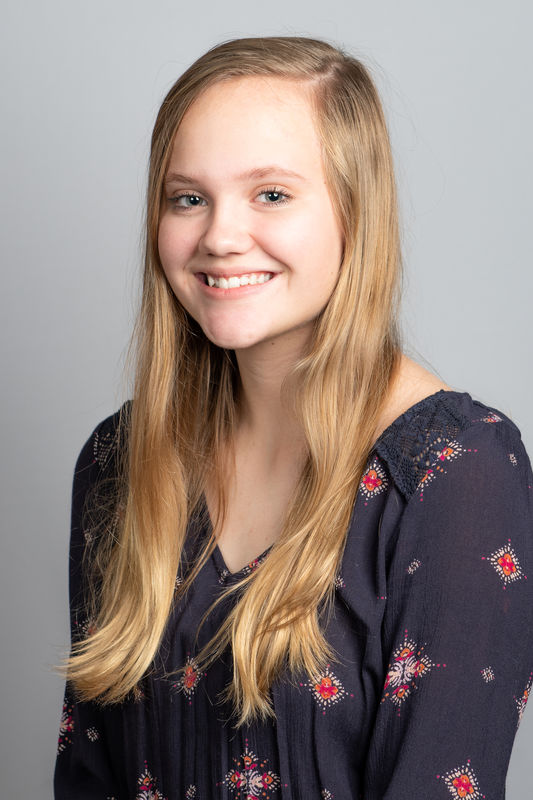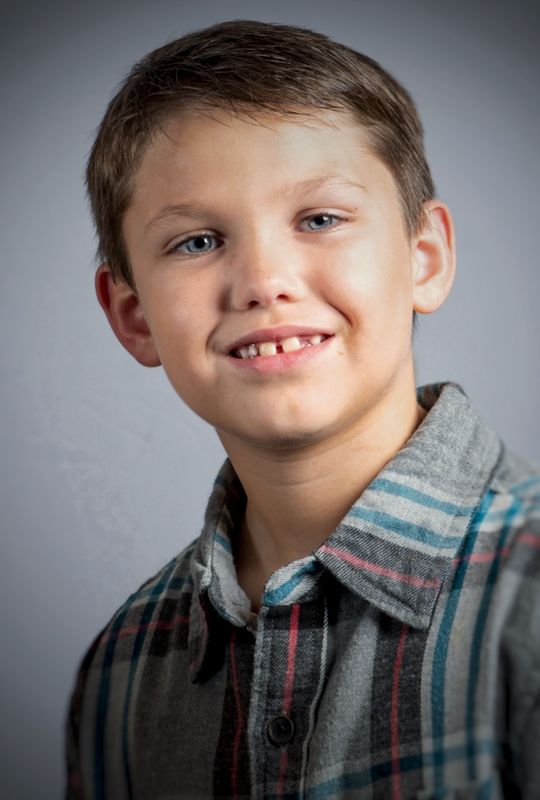Speedlight failure
Sep 10, 2018 17:11:08 #
GrandmaG wrote:
Is the only difference between the DigiBee and AlienBee the size, due to the modeling light? I looked at the chart on their webpage.You said "if I want to spend more money" get the Einstein. That sounds like the extra $$ doesn't buy a better light.
The DigiBee strobes have a a 400W equivalent LED modeling light. The AlienBee strobes have a 150W halogen quartz bulb. I have two of the DigiBee DB800 strobes. I like that the LED modeling lamp on the DigiBee stays cool. I have a P.C.B 10"x36" strip softabox. Since it's only 10" wide, the sides come close to the modeling lamp. With the LED lamp, it's no problem. If that was a halogen quartz bulb, I think the sides would get hot and it could damage the material over time. The halogen bulbs get really hot.
The big thing about the Einstein strobes is their constant color temperature feature. It's not perfectly constant but it fluctuates only about plus/minus 50 Kelvin at any power. It's flash duration is from 1/588 to 1/13,500 second. The DigiBee fluctuates about 400 Kelvin across its entire power range. That's pretty good. I've never noticed the fluctuation and never use the entire power range.
LensRentals.com rents the DigiBee, AlienBee, and Einstein strobes. I rented a DigiBee from them before I purchased. They list both the DigiBee and Alien Bee strobes as being AlienBees on their website. The way to tell them apart is this: The DigiBee is the DB800. The AleinBee is the B800.
Sep 10, 2018 17:38:28 #
OK Got it! Sorry for the long- long post but there is lots of information to get out for you.
The diagram looks complicated but you can modify it for a 2 light system plus your existing gear.
One alternative would be to use one light as a fixed fill- bounced for the ceiling or in a white umbrella or one of your larger soft boxes. The second light coud be equipped with a soft box or an umbrella and serve as the main light.
If you want to employ a kicker as an accent light, you can use one light in a soft box or umbrella as a main light and the second unit as the kicker- the trick would be using a simple flat "silver" reflector as a fill source. The main light can be feathered so that the edge of the beam strikes the reflector and bounced back at the subject.
In both cases, if needed, your modified speedlight can serve as a background light or a hair light.
The UV coating is not a big issue with digital cameras- so much as it was with film that had a tendency to develop a blue or cyan cast due to the excessive UV that flash can emit. Certain white fabrics, such as those used in wedding gowns contain UV brighteners which would fluoresces under the UV emissions. I have not seen this in digital work. UV coating can not cause any issues and perhas will yield a slightly warmer rendition.
Concentric modeling lamps tend to be more accurate- more so that outboard lamps that are mounted elsewhere in the head or reflector. It is not as critical in soft box or umbrella usage as it is in direct parabolic reflector usage.
I have been very pleased with the Photogenic gear over many years. I also have colleagues you use the Buff gear and are equally satisfied. Both brands have bright enough modeling lamps. LEDs seem to be replacing ordinary quartz lamps and I assume the will function well. Just make certain that they are dim-able. As I mentioned, you will find your ratios by testing so you won't necessarily need to depend on tracking modeling lamps. As long as you can easily place your main and/or kicker properly you will have no issues.
If you are going specialize in portraiture, you will most likely never need more that 400 watt-seconds.
Another plan is to buy one more powerful unit for bounce fill and one weaker one for the main. You can add more lights as you budget becomes available and build a more complex system
If the price of the Buff gear allows for more lights, as compared to the Photogenic or others- you may end up with a more versatile system and not really sacrifice quality.
I do recommend staying with one make and within the same line for more comparability.
It is not likely that you will burn out a flashtube anytime soon. Even in full-time studio use, they do last for a long time. The Photogenic units have plug-in tubes so you can keep a spare or two on hand. I use my units location as well, where they are more subject to breakage. I am not sure if some of the Buff units do have plug-in tubes but if they don't, since their service is excellent, fast and reasonable, this should not be a major concern.
Remember to base you power requirements on things like selective focus, depth of filed, modifier usage and the apertures you would prefer to work at at lower ISO settings.
Also consider what kind of barn-doors, snoots. grids and easily manageable soft-boxes and umbrellas are comparable with your units units of choice.
The diagram looks complicated but you can modify it for a 2 light system plus your existing gear.
One alternative would be to use one light as a fixed fill- bounced for the ceiling or in a white umbrella or one of your larger soft boxes. The second light coud be equipped with a soft box or an umbrella and serve as the main light.
If you want to employ a kicker as an accent light, you can use one light in a soft box or umbrella as a main light and the second unit as the kicker- the trick would be using a simple flat "silver" reflector as a fill source. The main light can be feathered so that the edge of the beam strikes the reflector and bounced back at the subject.
In both cases, if needed, your modified speedlight can serve as a background light or a hair light.
The UV coating is not a big issue with digital cameras- so much as it was with film that had a tendency to develop a blue or cyan cast due to the excessive UV that flash can emit. Certain white fabrics, such as those used in wedding gowns contain UV brighteners which would fluoresces under the UV emissions. I have not seen this in digital work. UV coating can not cause any issues and perhas will yield a slightly warmer rendition.
Concentric modeling lamps tend to be more accurate- more so that outboard lamps that are mounted elsewhere in the head or reflector. It is not as critical in soft box or umbrella usage as it is in direct parabolic reflector usage.
I have been very pleased with the Photogenic gear over many years. I also have colleagues you use the Buff gear and are equally satisfied. Both brands have bright enough modeling lamps. LEDs seem to be replacing ordinary quartz lamps and I assume the will function well. Just make certain that they are dim-able. As I mentioned, you will find your ratios by testing so you won't necessarily need to depend on tracking modeling lamps. As long as you can easily place your main and/or kicker properly you will have no issues.
If you are going specialize in portraiture, you will most likely never need more that 400 watt-seconds.
Another plan is to buy one more powerful unit for bounce fill and one weaker one for the main. You can add more lights as you budget becomes available and build a more complex system
If the price of the Buff gear allows for more lights, as compared to the Photogenic or others- you may end up with a more versatile system and not really sacrifice quality.
I do recommend staying with one make and within the same line for more comparability.
It is not likely that you will burn out a flashtube anytime soon. Even in full-time studio use, they do last for a long time. The Photogenic units have plug-in tubes so you can keep a spare or two on hand. I use my units location as well, where they are more subject to breakage. I am not sure if some of the Buff units do have plug-in tubes but if they don't, since their service is excellent, fast and reasonable, this should not be a major concern.
Remember to base you power requirements on things like selective focus, depth of filed, modifier usage and the apertures you would prefer to work at at lower ISO settings.
Also consider what kind of barn-doors, snoots. grids and easily manageable soft-boxes and umbrellas are comparable with your units units of choice.
Sep 11, 2018 02:56:39 #
CO wrote:
The DigiBee strobes have a a 400W equivalent LED ... (show quote)
For the money, the Einstein seems to be the better choice.
Nov 2, 2018 20:38:07 #
The catch light on #2 make a world of difference and they eyes don't look dead. Strongly suggest using some type of fill to get the eyes looking alive.
Nov 3, 2018 12:13:15 #
ronz wrote:
The catch light on #2 make a world of difference and they eyes don't look dead. Strongly suggest using some type of fill to get the eyes looking alive.
I now have one AlienBees strobe and a beauty dish. I set it up against a white background with a silver reflector opposite the light. I’m having trouble positioning the light and reflector. I love the strobe though. Plug it in and it works. The light is so bright! I turned it WAY down.
I’m doing the grandkids school pictures on Monday, so I’ll post a picture afterwards.
Nov 5, 2018 17:03:35 #
GrandmaG wrote:
I now have one AlienBees strobe and a beauty dish. I set it up against a white background with a silver reflector opposite the light. I’m having trouble positioning the light and reflector. I love the strobe though. Plug it in and it works. The light is so bright! I turned it WAY down.
I’m doing the grandkids school pictures on Monday, so I’ll post a picture afterwards.
I’m doing the grandkids school pictures on Monday, so I’ll post a picture afterwards.
When using the one light plus reflector setup, it can be difficult when using a beauty dish. When you feather the light and rotate it enough whereby the edge of the beam strikes the reflector, some of the direct raw light from the flash tube can get out from behind the deflector at the front of the dish. It easier to use a soft box for that particular method.
Nov 7, 2018 11:31:29 #
E.L.. Shapiro wrote:
When using the one light plus reflector setup, it can be difficult when using a beauty dish. When you feather the light and rotate it enough whereby the edge of the beam strikes the reflector, some of the direct raw light from the flash tube can get out from behind the deflector at the front of the dish. It easier to use a soft box for that particular method.
Here is the result of using the beauty dish and reflector setup. My granddaughter preferred the face front pose with the light almost directly in front. I don't have a boom arm, so I couldn't put it exactly front and center. I'm very happy with the catchlights in their eyes, but I did notice that the pupils are still a little large. I used a 24-70/2.8 lens on a Nikon D500. Manual settings were: 5.6, 1/125, ISO-100, distance 70 mm (105 equiv.). They were sitting in front of a white background and I wanted a gray background, so I am happy with this result. Here are my questions:
1. How do I get their pupils small? Should I have left the modeling light on? I only needed 1/16 power for the Alien Bee Strobe. It was 2-3 feet away, slightly above eye level, and at about 45 degrees for the boys.
2. The only soft box I have is rectangular in shape and made for a speedlight. I think I prefer the round or octagonal shape of catchlight in the eye, so I thought that I would get an OctoBox from Paul C Buff. The question is, which size for head shots? There is a 35", 47", and 60". I would also get the 7" umbrella reflector by PCBuff.
3. I plan on shooting a family of 6 against a gold background with Christmas lights draped in front of the backdrop. Do I need two lights for a group that size? Also, what size soft box? And, lastly, how far from the backdrop should they stand to get the lights to blur? I have these lenses, in addition to the 24-70/2.8: 135/1.8 lens, 85/1.8, and 50-100/1.8. I was thinking about using the 135 to get the best bokeh; but, of course, I'd have to bump up the aperture somewhat to make sure that everyone is in focus.
As usual, your advice is priceless.
Nov 21, 2018 17:53:51 #
berchman
Loc: South Central PA
GrandmaG wrote:
I have been using speedlights and umbrellas for po... (show quote)
Before you run out and buy the Paul C Buff Digibee that many are recommending, you should read this review:
http://resourcemagonline.com/2016/07/paul-c-buff-announced-the-new-digibees-and-why-i-really-dont-care/68857/
Since you require battery operation I suggest you check out the Godox AD600 Pro which has a powerful modeling light. It is also sold by Adorama as the Flashpoint XPLOR 600 Pro TTL and is now on sale. If you can forgo battery operation the HoneyBadger 320Ws strobe is a great light with a very powerful modeling light and is on sale for only $250. It is non TTL, but unless you are running around photographing events or weddings, you don't need TTL. I use it together with Nikon speedlights and Pocket Wizards. You can connect the Pocket Wizard transmitter to the Flashpoint radio remote and it will set off both the strobes and the speedlights.
Nov 21, 2018 21:58:40 #
Hi- Sorry I did not get back to you sooner about theses images. I think you are on the right track.
The catch-ligh size is fine- if you can, retouch out the ones at the 9 o'clock position and leave the one in the 11 or 1 o'clock position in the eyes. If you go to a smaller umbrella on your main light, you wont get that kinda donut shaped catch-light that the beauty light can cause.
You may want to up the ratio a bit and get slightly deeper shadows- still transparent but just a tad more. If you go to ceiling bounce for you fill the second catch-light longer will no become an issue and you may get a more pronounced ratio.
Pose, density and cropping-- The angle of the shoulders as related to the head, in you second shot from the top, is the best position. I will do a quick edit to make a cropping suggestion and I have increased the contrast and reduced the brightness. Check out the eyes. When the images is "printed down" the lighting ratio is more pronounced.
Bring the camer to the subject's eye level or slightly higher for a head and shoulders shot.
I hope this helps.
About the Buff lights- The are certainly good for the money. In studio and home use, they shoud prove to be durable. In heavy duty location use, what with all the setting up and taking down and transport, even the more expensive units can be subject to breakage or damage. Also, in studio or home use, TTL operation is not all that important. I'm sure you can determine the correct exposures and ratios.
The catch-ligh size is fine- if you can, retouch out the ones at the 9 o'clock position and leave the one in the 11 or 1 o'clock position in the eyes. If you go to a smaller umbrella on your main light, you wont get that kinda donut shaped catch-light that the beauty light can cause.
You may want to up the ratio a bit and get slightly deeper shadows- still transparent but just a tad more. If you go to ceiling bounce for you fill the second catch-light longer will no become an issue and you may get a more pronounced ratio.
Pose, density and cropping-- The angle of the shoulders as related to the head, in you second shot from the top, is the best position. I will do a quick edit to make a cropping suggestion and I have increased the contrast and reduced the brightness. Check out the eyes. When the images is "printed down" the lighting ratio is more pronounced.
Bring the camer to the subject's eye level or slightly higher for a head and shoulders shot.
I hope this helps.
About the Buff lights- The are certainly good for the money. In studio and home use, they shoud prove to be durable. In heavy duty location use, what with all the setting up and taking down and transport, even the more expensive units can be subject to breakage or damage. Also, in studio or home use, TTL operation is not all that important. I'm sure you can determine the correct exposures and ratios.
Nov 21, 2018 22:03:37 #
If you want to reply, then register here. Registration is free and your account is created instantly, so you can post right away.




